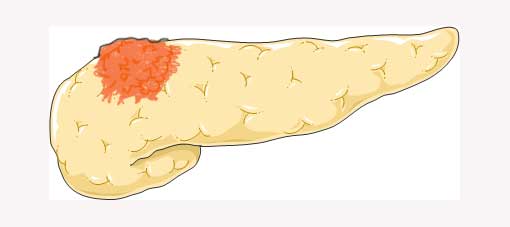6th October 2019. Dr Chee L Khoo
Last month we looked at the state of play with screening for the deadly disease, pancreatic ductal adenocarcinoma (PDAC). We saw how it may not be useful to screen the general population with the technology that we have but there are select higher risk groups where screening may be useful. Long standing type 2 diabetes (T2DM) is a modest risk factor for PDAC. But the relationship between PDAC and T2DM is multidirectional and complex. It is worthwhile exploring that relationship in an entire article this week.
Whenever PDAC is present, there is almost always a glucose dysmetabolism. The association between T2DM and PDAC has been known since the 1800s (1). Long standing T2DM increases the risk of PDAC by 1.5- to 2-fold (2). Pannala (2008) found diabetes present in almost 50% of patients with PDAC at diagnosis (3). In a more recent study by Sharma (2018), 42% of patients with PDAC had diabetes at diagnosis, 52% of which were new onset diabetes (NOD) (4).
So, how are they related?
There is evidence that obesity is associated with increased risk for PDAC and the anticipated increase in incidence of PDAC could partly be attributed to the obesity endemic (5). For every 5kg/m2 increase in BMI, there is a 12% increase risk in PDAC (6). Obese adolescents followed up for 23 years had a 4-fold increase risk of PDAC in adulthood (7). Naturally, the obvious confounding factor in the obesity link is co-existing diabetes. Is the diabetes the cause of the PDAC or is it the obesity? There are studies which indicate that obesity confers a significant cancer risk independent of the presence of diabetes (8).
The PDAC cells have long been known to be metabolically active. There are many possible mechanisms by which obesity leads to pancreatic cancer, including insulin resistance with resulting hyperinsulinemia and inflammation (9). Obesity-associated tissue inflammation is thought to create a fertile microenvironment conducive to tumour initiation and/or promotion.
PDAC cells cause beta-cell dysfunction in human islets, rat islets, and isolated cells by producing soluble factors that impair glucose metabolism in vitro and cause hyperglycaemia in vivo. PDAC-derived exosomes cause paraneoplastic dysfunction of human beta-cells and inhibit insulin secretion (10,11).
The relationship cuts both ways
While obesity and diabetes increase the risk of PDAC, PDAC per se is also very diabetogenic. It destabilises glucose homeostasis in nearly all patients in whom it occurs, making it one of the most prevalent phenotypic traits of PDAC. In patients with pre-existing diabetes, PDAC makes glycaemic control worse. In those who are at risk of diabetes, PDAC converts them to diabetes (NOD).
When fasting blood glucose (FBG) in patients with PDAC were compared with matched control individuals up to 60 months, they found that 30–36 months before diagnosis, glucose levels in PDAC progressively rose until they cross the DM threshold approximately 6–12 months before diagnosis of PDAC (4).
In the same study, FBG level correlates with PDAC tumour volume and that FBG levels start rising when tumours are 1–2 cm3 in volume, crossing the T2DM threshold at approximately 12 cm3 (4). Hyperglycaemia is a biomarker of early invasive PDAC, with most being new onset diabetes starting 36 months before cancer diagnosis. Pelaez-Luna (2007) found that in 74% of the PDAC patients with diabetes, the diagnosis of diabetes was made within 24 months before the diagnosis of PDAC, frequently at a time when the tumour was radiographically occult (12). This suggests that in many patients, new-onset diabetes is caused by the tumour and may be a useful “biomarker” for the diagnosis of PDAC.
And many of these patients are in primary care. Let’s keep a high index of suspicion amongst our patients who may be at high risk of pancreatic cancer.
References
- Green RC Jr, Baggenstoss AH, Sprague RG. Diabetes mellitus in association with primary carcinoma of the pancreas. Diabetes 1958;7:308–311.
- Sah RP, Nagpal SJ, Mukhopadhyay D, et al. New insights into pancreatic cancer-induced paraneoplastic diabetes. Nat Rev Gastroenterol Hepatol 2013;10:423–433.
- Pannala R, Leirness JB, Bamlet WR, et al. Prevalence and clinical profile of pancreatic cancer-associated diabetes mellitus. Gastroenterology 2008;134:981–987.
- Sharma A, Smyrk TC, Levy MJ, et al. Fasting blood glucose levels provide estimate of duration and progression of pancreatic cancer before diagnosis. Gastroenterology 2018;155:490–500.
- Renehan AG, Zwahlen M, Egger M. Adiposity and cancer risk: new mechanistic insights from epidemiology. Nat Rev Cancer 2015;15:484–498.
- Larsson SC, Orsini N, Wolk A. Body mass index and pancreatic cancer risk: a meta-analysis of prospective studies. Int J Cancer 2007;120:1993–1998.
- Zohar L, Rottenberg Y, Twig G, et al. Adolescent overweight and obesity and the risk for pancreatic cancer among men and women: a nationwide study of 1.79 million Israeli adolescents. Cancer 2019;125:118–126.
- Jiao L, Berrington de Gonzalez A, Hartge P, et al. Body mass index, effect modifiers, and risk of pancreatic cancer: a pooled study of seven prospective cohorts. Cancer Causes Control 2010;21:1305–1314.
- Park J, Morley TS, Kim M, Clegg DJ, Scherer PE. Obesity and cancer–mechanisms underlying tumour progression and recurrence. Nat Rev Endocrinol2014;10:455–465
- Sah RP, Nagpal SJ, Mukhopadhyay D, et al. New insights into pancreatic cancer-induced paraneoplastic diabetes. Nat Rev Gastroenterol Hepatol 2013;10:423–433.
- Javeed N, Sagar G, Dutta SK, et al. Pancreatic cancer derived exosomes cause paraneoplastic beta-cell dysfunction. Clin Cancer Res 2015;21:1722–1733.
- Pelaez-Luna M, Takahashi N, Fletcher JG, Chari ST. Resectability of presymptomatic pancreatic cancer and its relationship to onset of diabetes: a retrospective review of CT scans and fasting glucose values prior to diagnosis. Am J Gastroenterol 2007;102:2157–2163
- Singhi A, Koay E, Chari S, Maitra A. Early Detection of Pancreatic Cancer: Opportunities and Challenges. Gastroenterology 2019;156:2024–2040
